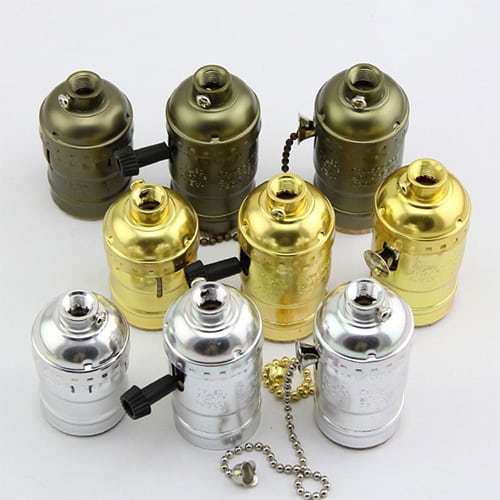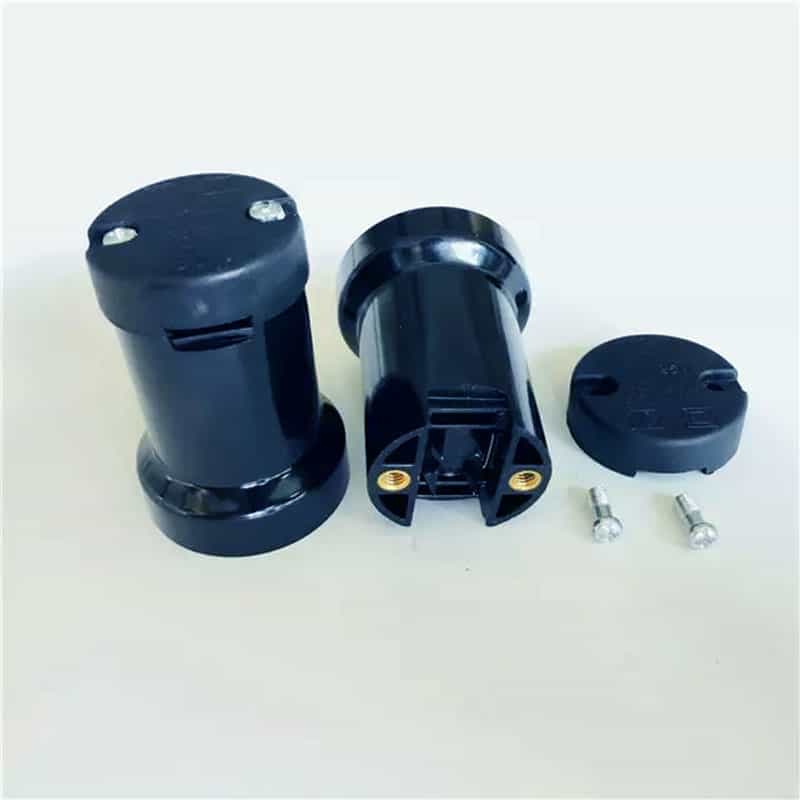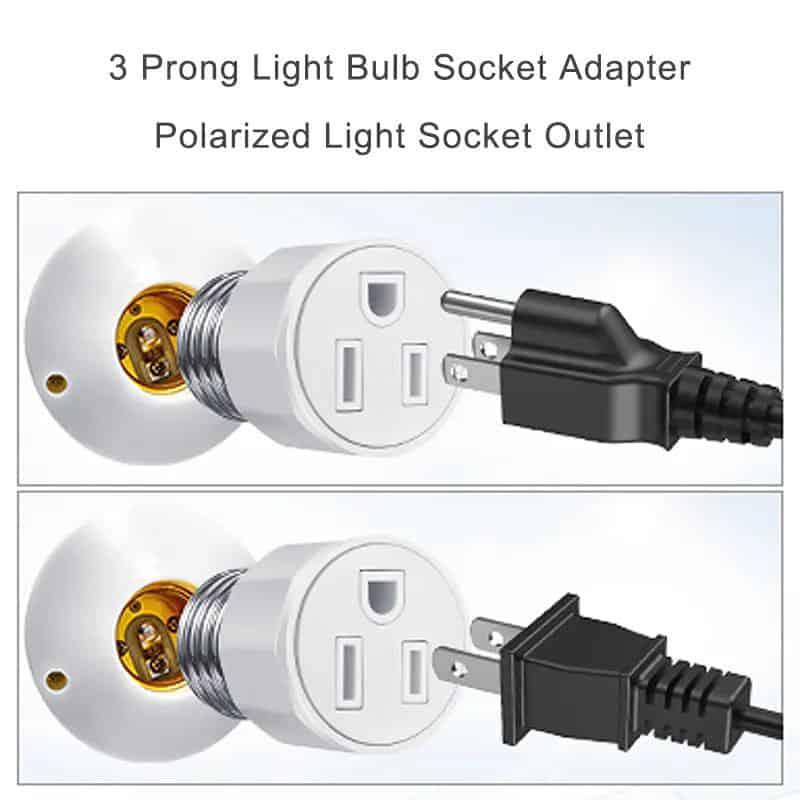If you’re unsure whether E26 and E27 bulbs are interchangeable, you can have compatibility issues that can lead to reduced safety and efficiency. The good news is there are simple solutions to understand their differences and safe usage.
Yes, E26 and E27 bulbs are interchangeable because their base sizes are almost identical. However, ensure voltage compatibility before using them interchangeably.
Now, let’s explore the differences and how to use E26 and E27 bulbs.
What is the difference between an E26 and an E27 bulb base?
The primary difference between E26 and E27 bulb bases lies in their country of use and voltage standards. E26 is predominantly used in the United States and Canada, while E27 is more common in Europe and other regions following European standards. Despite this, their physical size difference is minuscule; the “26” in E26 stands for 26 millimeters, and the “27” in E27 stands for 27 millimeters, indicating the diameter of the screw base.

In practical terms, the difference of just 1 millimeter in diameter is often negligible, allowing the bulbs to fit into each other’s sockets in most cases. However, the voltage standards in the US (110-120V) and Europe (220-240V) mean that while the bulbs might physically fit, you must ensure they are rated for the voltage supplied in the socket to avoid electrical hazards.
Can I use a 120V E26 bulb in a 250V E27 lamp base?
It is not advisable to use a 120V E26 bulb in a 250V E27 lamp base due to the voltage difference. E26 bulbs designed for 120V may burn out quickly or even cause electrical problems when used in higher voltage environments like those found in Europe. While the bulb may fit into the socket, the mismatch in voltage can lead to overheating, potential short-circuiting, or other safety hazards.
Always ensure that the bulb’s voltage rating matches the lamp’s electrical supply. In this case, a 120V E26 bulb should only be used in a lamp designed for 120V.
How do I identify my E26 bulb?
To identify an E26 bulb, look for markings or labels on the base or the side of the bulb. Most manufacturers clearly print the bulb’s type, including whether it is E26, as well as its voltage and wattage ratings. If the marking is unclear, measure the diameter of the screw base. An E26 bulb has a base diameter of 26 millimeters, which is a standard for many light fixtures in North America.
Additionally, the base of an E26 bulb will typically be made of metal and feature the characteristic screw-in design that fits into standard E26 or E27 sockets.

Is E27 light socket standard?
Yes, the E27 light socket is a standard in many parts of the world, especially in Europe, Asia, and other regions using 220-240V electrical systems. The E27 socket is commonly found in household lighting fixtures, such as ceiling lamps, floor lamps, and desk lamps.
Given its widespread use, most manufacturers produce bulbs compatible with the E27 socket. This ensures that users have plenty of options when selecting light bulbs, from LED to incandescent and halogen options.
What type of bulb is standard?
In the United States, the E26 bulb is considered the standard for most residential lighting. This includes a variety of bulb types, such as LED, CFL, incandescent, and halogen. E26 bulbs are commonly found in table lamps, ceiling fixtures, and pendant lights across American households.
On the other hand, in Europe and many other parts of the world, the E27 bulb is the standard. The two are often used interchangeably because of their similar size and shape, but care must be taken to match the bulb’s voltage to the fixture’s requirements.
Can you use E26 instead of E27?
Yes, you can generally use an E26 bulb in an E27 socket and vice versa, as the base sizes are very close to each other. The mechanical fit is often perfect, and the bulbs screw into each other’s sockets without issue.

However, when using E26 bulbs in E27 sockets, it is critical to check the voltage. If the lamp socket is designed for 220-240V, you must ensure the bulb can handle that voltage to avoid electrical mishaps. Always prioritize voltage compatibility when substituting bulbs between these two socket types.
Can you use E27 in the USA?
Yes, you can use an E27 bulb in the USA, but there are some considerations. Since the US uses a 120V electrical system, you must ensure that the E27 bulb you are using is rated for 120V. Many E27 bulbs are available in multiple voltage options, including 120V versions, so it’s possible to find one compatible with US voltage standards.
Always check the packaging or product specifications before using an E27 bulb in the US to ensure safe and efficient operation.
Is E27 the same as A19?
No, E27 refers to the base of the bulb, while A19 refers to the shape and size of the bulb. The “E” designation relates to the Edison screw base size, while the “A” refers to the bulb shape (in this case, a standard pear-like shape).
In practical terms, an A19 bulb can have an E26 or E27 base, depending on the region of use. An A19 bulb with an E27 base would typically be found in European markets, while one with an E26 base is more common in North America.

Is E26 a normal socket?
Yes, E26 is a normal, standard socket in the United States and Canada. It is the most commonly used base for residential lighting and is compatible with a wide range of bulb types. Whether you’re using LED, CFL, or incandescent bulbs, most of them will have an E26 lamp holder if you’re in a country that uses 110-120V electrical systems.
Because of its widespread use, finding replacements for E26 bulbs is easy, and most household light fixtures are designed to accommodate this socket type.
How to tell if a bulb is E26?
To tell if a bulb is E26, check the markings on the bulb itself. Most bulbs will have a printed label that includes the base type, such as “E26.” If no markings are visible, measure the diameter of the base. If the base diameter is 26 millimeters, it is an E26 bulb.
Additionally, you can compare the bulb’s base to a known E26 socket or bulb to see if it fits, as the screw-in design is specific to this type of base.

Can I replace E26 with A19?
Yes, you can replace an E26 bulb with an A19 bulb, but it’s important to note that these terms describe different aspects of the bulb. E26 refers to the base type, while A19 refers to the bulb’s shape. Most A19 bulbs have an E26 base, so the two are compatible.
If you’re replacing an E26 bulb, just make sure the new bulb also has an E26 base, regardless of its shape, and that the voltage and wattage are suitable for your fixture.
Conclusion:
E26 and E27 bulbs are mostly interchangeable. Just make sure you check the voltage to be safe.













